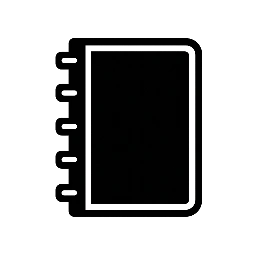Entry Type 86 refers to a specific classification used in certain technical or regulatory contexts to categorize data, products, or actions. It helps streamline processes by clearly defining the scope and requirements associated with that entry.
It is most significant because it standardizes the handling and assessment of items under its category, ensuring consistency and compliance. Understanding Entry Type 86 can improve efficiency and reduce errors where these classifications apply.
This entry type is commonly seen in industries that rely on precise documentation and categorization, such as logistics, manufacturing, or information management. Recognizing its role helps professionals navigate complex systems more effectively.
Understanding Entry Type 86
Entry Type 86 involves specific regulations and criteria that individuals or entities must meet to qualify. It includes particular characteristics and serves defined purposes within its legal or procedural framework.
Definition and Purpose
Entry Type 86 is a classification used primarily in customs and immigration contexts to designate a unique category of entry. It facilitates a specific kind of transaction or movement that differs from standard entries due to its distinct legal or operational framework.
The purpose of Entry Type 86 is to streamline and regulate activities that require special handling, such as temporary importation, specialized business operations, or restricted goods transfer. It ensures compliance with relevant laws while allowing flexibility in processing.
Key Features
Entry Type 86 is marked by several defining features. One key aspect is its limited validity period, often contingent on meeting ongoing requirements. This temporal limitation distinguishes it from permanent entry types.
Another feature is the requirement for detailed documentation. Applicants must provide clear proof of intent, financial standing, or operational plans. This documentation supports regulatory bodies in assessing eligibility and compliance.
Restrictions often accompany Entry Type 86, limiting geographic or functional scope. These constraints protect against misuse and align the entry with its intended purpose.
Eligibility Criteria
Eligibility for Entry Type 86 demands meeting strict conditions. Applicants must typically demonstrate a clear purpose aligned with the type’s objectives, such as short-term business activities or specialized imports.
Proof of compliance with financial, legal, and operational standards is required. This may include licenses, permits, or financial guarantees. Non-compliance often results in denial or revocation of the entry.
Specific nationality, residency, or organizational status requirements apply depending on jurisdiction. These criteria are designed to ensure the entry is granted to qualified applicants only.
Application and Compliance for Entry Type 86
Entry Type 86 requires precise adherence to specific filing steps, submission of detailed documentation, and navigation of common procedural issues. Applicants must ensure all forms and paperwork meet regulatory standards to avoid delays or rejections.
Filing Procedures
Entry Type 86 must be filed electronically through authorized customs software. The filer must select the correct entry type code, ensuring it matches the imported goods’ classification. Submission deadlines are strict, typically within 10 business days of shipment arrival.
Each filing requires verification of importer identification and payment of applicable duties. Any discrepancies in the entry data can trigger automatic holds, requiring immediate correction. Accurate data input minimizes risk of customs penalties or extra inspections.
Required Documentation
Applicants must submit specific documents including the commercial invoice, packing list, and Bill of Lading. The invoice should clearly state item descriptions, values, and Harmonized Tariff Schedule codes. Certificates of origin or special permits must accompany certain products.
Supporting documents must be legible and translated if not originally in English. Failure to provide all required paperwork can lead to entry rejection and shipment delays. Maintaining organized copies helps in case of post-entry audits.
Common Challenges
Misclassification of goods is a frequent issue that leads to filing errors under Entry Type 86. Importers often struggle with matching precise tariff codes to products, causing customs disputes or penalties.
Another challenge is incomplete documentation. Missing permits or unclear invoices often delay processing. Customs brokers play a critical role in mitigating these risks by reviewing submissions before filing and advising on regulatory changes.


Leave a Reply